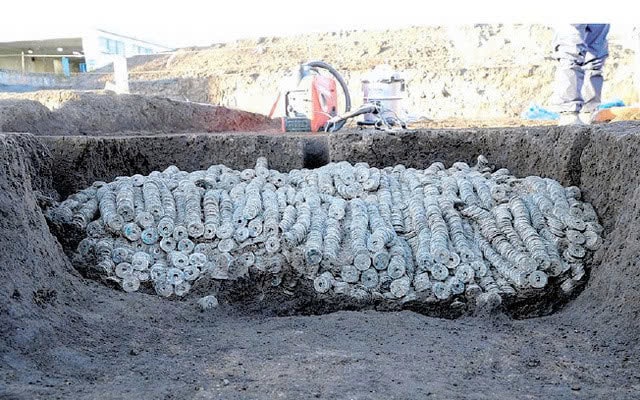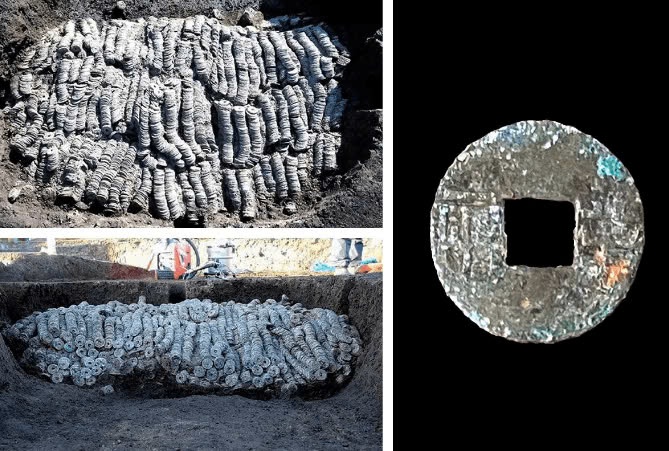Remarkable Find at Sosha Village East 03

In a stunning archaeological discovery, more than 100,000 ancient coins have been unearthed at the Sosha Village East 03 site in Maebashi City, Japan. This remarkable find, prompted by the construction of a new factory, has shed light on the rich history of currency and trade in medieval Japan.
A Glimpse into Ancient Currency

The excavation revealed a diverse collection of coins, some dating back over 2,000 years. Among the most notable finds were:
- “Ban Liang” coins from 175 B.C., China’s first unified currency
- Coins spanning from the 7th to 13th centuries
- A total of 44 different currency types identified
Preservation and Historical Context
The coins were found bundled in groups of about 100, secured with straw cords called “sashi.” This meticulous preservation suggests a hasty burial, possibly due to impending conflict in medieval Japan.
Significance of the Discovery
Archaeological Importance

The Sosha Village East 03 site is part of a larger archaeological area, indicating the region’s importance from the late Kofun to the Ritsuryo period. This discovery provides valuable insights into the economic and social dynamics of ancient Japan.
Public Exhibition

The artifacts are currently on display at the “Newly Excavated Cultural Artifacts Exhibition 2023” in Maebashi City, offering the public a chance to witness this extraordinary piece of history firsthand.
This remarkable find not only offers a window into the past but also highlights the ongoing importance of archaeological research in uncovering the secrets of our shared human history.
